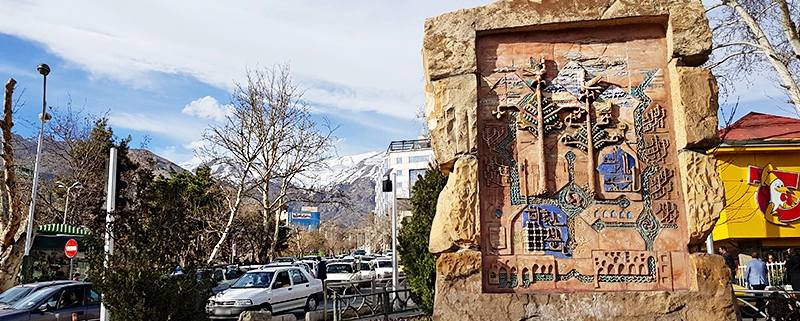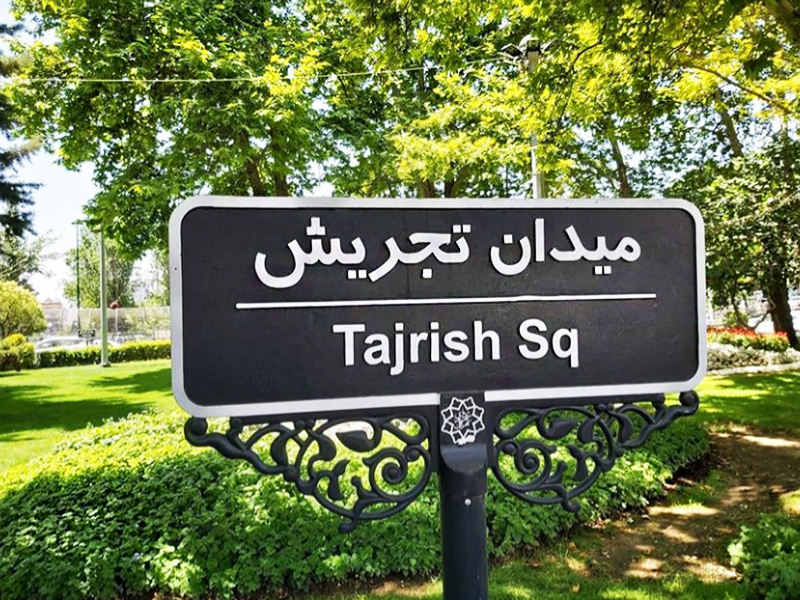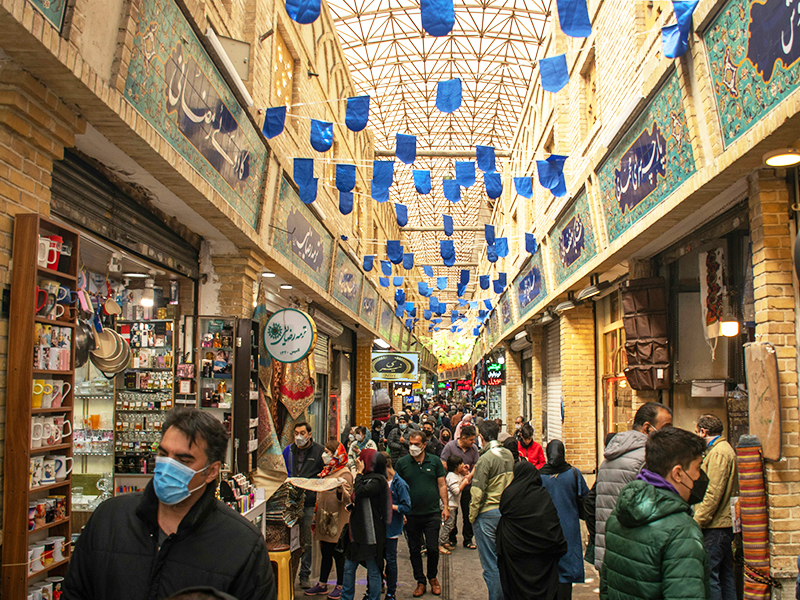Everything About Tajrish, Tehran (History, Square, Bazaar, Map)
Tajrish Street is one of the most wonderous streets in the north of Tehran, the capital of Iran, which offers a rich variety of experiences for enthusiastic travelers. From ancient landmarks to vibrant bazaars, Tajrish allows you to embark on an excursion through the top things to do in this captivating locale. It is a great meeting place for the locals with different cultures and beliefs. This street, which is located next to the shrine of Imam Zadeh Saleh, serves as a destination for pilgrims and Muslims.
About Tajrish Tehran
Located in the northern part of the capital city, Tajrish is a district that combines history, culture, and modernity. As one of the oldest parts of the city, it welcomes its travelers with its unique architecture and an array of activities waiting to be explored.
Tajrish is the oldest and most beautiful district in Tehran that many of the citizens of Tehran and even outsiders have memories of. In this district, you will find a traditional bazaar, as well as modern shopping centers that attract many tourists from all over the globe.
Tajrish Street is one of the busiest streets in Tehran, which forms the end point of Valiasr Street. On this street, there is the old market of Tajrish, which offers all kinds of handicrafts, dry fruits, saffron, spices, etc. This eye-catching and attractive market, with its old facade, is a sight to behold. In addition to the traditional bazaar, the Saad Abad Palace Complex, Palladium, Arg, Ghaem, and Tandis are among the best shopping locations to stroll around on Tajrish Street.
Like the other parts of the city, Tajrish weather will depend on the season of the year. During summer and winter, the weather will be extreme, but spring is the best time to see this remarkable place since the weather is pleasant and the shops are full of fresh fruits and vegetables. However, due to the high altitude of this district, in the colder seasons, the weather will be colder than the other areas of Tehran.
The History of Tajrish
The history of Tajrish dates back to a thousand years ago when it was called “Tajrasht” and it was considered one of the villages of Ray City (now in the south of Tehran). Abu Talib Muhammad Tughril ibn Mika’il, better known as Tughril, the famous ruler of the Seljukian dynasty, died in this village in 455 AD, and his body was moved to Ray City.
Also, in this neighborhood, the court of Imam Zadeh Saleh, the brother of Imam Reza (AS), is located, which is known as a holy and religious location. These are some of the reasons why this street is so praised among Iranians.
Tajrish Meaning
The word Tajrish is derived from the word Tajrash, which is composed of “Tejar” meaning palace in Persian, and Sht, meaning a place, and in total, it means the village of the location of the palace and palace of the local ruler and a wealthy person. Tajrish (Tajarsht) means the place of a stone palace. An Iranian historian has mentioned in his descriptions of Tughril’s reign and referred to the Tajrasht Palace, which today is the Tajrish district.
Tajrish Square
The famous Tajrish Square, which is at the end of Valiasr Street in Tehran, is one of the busiest commercial areas of the city. In recent years, Tehran Municipality has renovated the Tajrish Bazaar and Imam Zadeh Saleh Mosque and made access much more efficient to this square from other parts of Tehran.
The Square is located in the southern foothills of the Alborz Mountain range, in the north of the capital. Around Tajrish Square are areas such as Qaytaria, Elahia, Dezashib, Niavaran, Jafarabad, Darband, and Zafaranieh. Tajrish Square has numerous sites for tourism, from historical monuments and buildings to markets and various restaurants, which have turned this square into one of the best sightseeing places in Tehran.
Tajrish Square attracts many climbers and hikers on weekends and holidays. Since the access to Darband and Gulab Dareh Mountains is made from this Square. From this square, you can reach the Tajrish Bazaar, Tajrish Tower, and Imam Zadeh Saleh Mosque.
Tajrish Traditional Bazaar
Tajrish market is regarded as a most favored point in Tehran, which has a large range of diversity in terms of goods and handicrafts, and at the same time, all kinds of prices can be seen in it. This Bazaar, which is located in the heart of the historical district of Tajrish has a Hosseiniyeh (a place for religious ceremonies, but it is commonly used for selling fruits and vegetables when ceremonies aren’t taking place), a mosque, and small shops like traditional bazaars. In addition, an indoor fruit and vegetable market also operates in this place, which has many customers among domestic and foreign tourists.
Tajrish Market is a historical gem in the heart of Tajrish, which perfectly illustrates the magnificence of the Persian culture and commerce. Stepping into this bustling market is similar to entering a new historical world, where traditional architecture and a rich archeological ambiance create an enchanting atmosphere. The maze of narrow alleys is adorned with colorful stalls, each offering a diverse selection of Persian treasures – from handwoven carpets and intricate handicrafts to aromatic spices and exotic teas.
The scent of Persian cuisine flows through the air, welcoming visitors to indulge in the culinary delights served by local shops. The intricate tile work that decorates the market’s archways and facades adds a touch of artistic sophistication, making each corner of this Bazaar a photo-worthy moment. Tajrish Bazaar isn’t just a marketplace! It’s a living market to the Persian heritage, inviting travelers to experience a place that transcends time.
What Is the History of Tajrish Bazaar?
The age of Tajrish Bazaar is estimated to be 70 years old. Although, its old customers say that this market is more than 150 years old. However, structures such as the 220-year-old Tajrish bazaar’s famous Takyeh ceremony (Takyeh is a building where Shia Muslims gather) that this place is much older than what is believed.
The history of the Tajrish market is closely related to the growth and development of the Tajrish district. At first, the Tajrish was not built in a modern fashion and mostly boasted gardens, large bungalows, and villages. Nomads and people made use of the pleasant weather of the Tajrish area during spring and summer. At the same time, workers from Taleghan, Lorestan, Nayin, Natanz, etc., came to this area to work in its gardens for a living, and they gradually stayed in Tajrish.
After Reza Shah (Pahlavi Dynasty) chose Darband as his summer residence, Tajrish became more prosperous and developed, and in the same way, the old Shemiran road was built to Tajrish square, and bus and riding stations took the place of Charpayan, which leads to today where you will find modern buildings and apartments.
What You Can Buy in the Tajrish Bazaar?
Handicrafts: There are all kinds of Persian handicrafts from all over Iran in this place, and among the most famous of these handicrafts are Yazd cashmere, Khatam Kari, Isfahan enamel, and copper dishes, Hamadan pottery, Kurdistan rugs and carpets, other copper dishes, etc.
Nuts and dried fruits: In the Tajrish market, you can buy high-quality and best-quality nuts and dried fruits, including Damghan and Rafsanjan pistachios, Khorasan saffron, Pastry, Gaz of Isfahan, etc. These items are sold in most of the shops. The most popular souvenirs among foreign tourists are pistachios and saffron, and without these two, a trip to Iran will not suffice.
Accessories and Tasbih: To have a good souvenir of the Tajrish market, you can also choose ornaments and accessories. There is a jewelry shopping center in Tajrish where you can buy gold and silver rings and necklaces.
Spices: One of the sections that you will truly adore is when you visit the spice shops and perfume shops in the bazaar, whose variety of vibrant colors will amaze you, and you will not know which spice to buy. These shops are among the most cherished shops in the bazaar because many locals buy the spices they need from these places.
Coffee Shops and Restaurants in Tajrish
If you want to taste the Tajrish food, there are tons of locations available for you. This street has various restaurants, coffee shops, parks, and museums that can be attractive to tourists and visitors. Next to the small dining places of Tajrish, there are also luxurious and beautiful restaurants, some of which are among the oldest restaurants in Tajrish Square.
Cafes in Tajrish Square are also suitable places to have a hot drink in winter and natural juices in summer.
Tajrish Map
Tajrish is located in the small province of Shemiranat of Tehran province and is located in District 1 of Tehran (location on map).
Final Words
Tajrish Iran, a charming district in Tehran, is a treasure trove of cultural, historical, and culinary wonders. This street, in addition to Imam Zadeh Salih Mosque, has an attractive variety of different touristic locations and shows how history and culture harmonize with today’s life. The Tajrish Bazaar is a treasure of the district’s rich history. Dating back centuries, this bustling marketplace is not only a hub for commerce but also a living museum of traditional Persian architecture.
Are you planning to travel to Iran and looking for an Iran travel agency? Then read the things to do in Tehran blog and check out our Iran tours.









Leave a Reply
Want to join the discussion?Feel free to contribute!